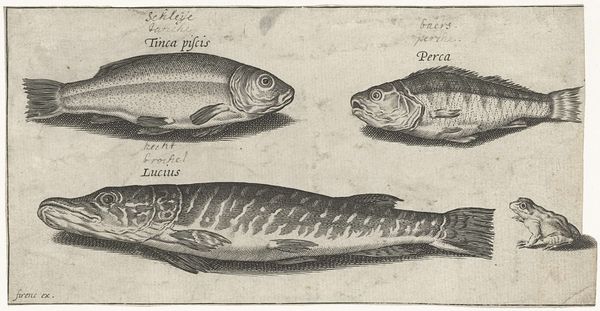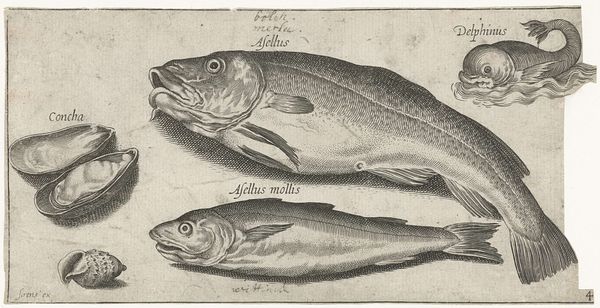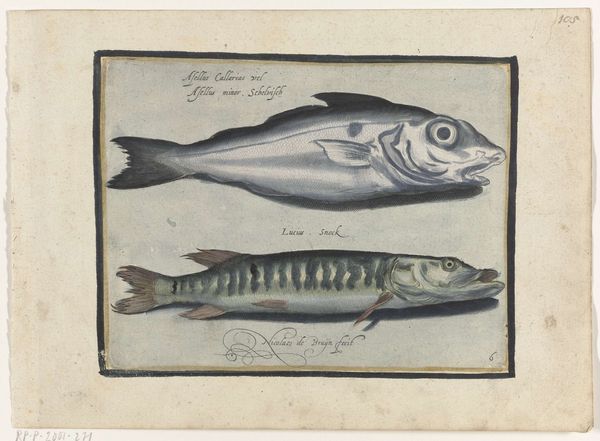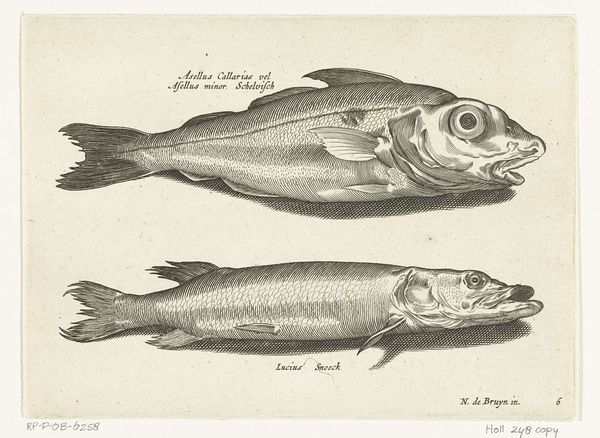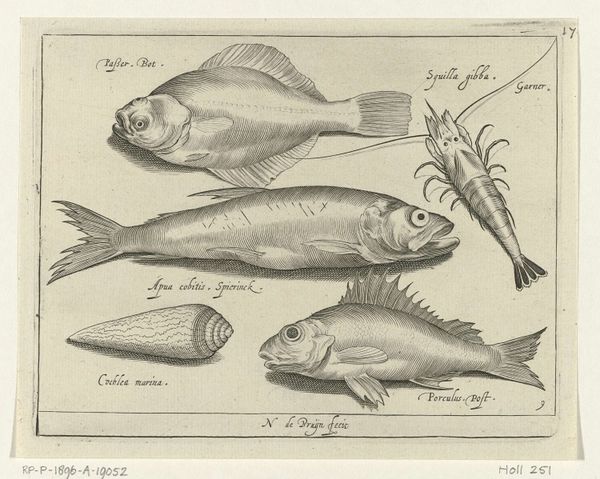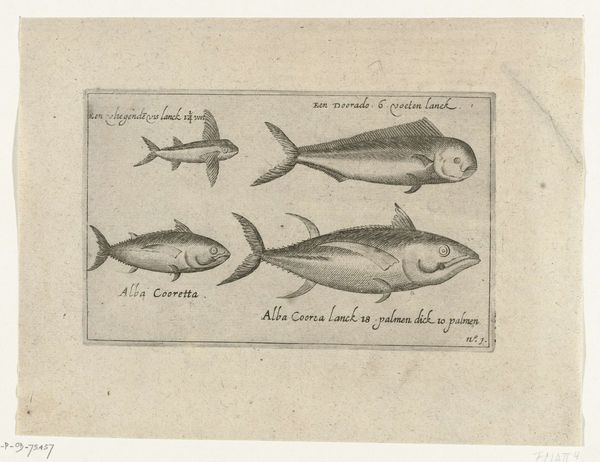
print, engraving
#
baroque
# print
#
old engraving style
#
history-painting
#
engraving
Dimensions: height 87 mm, width 183 mm
Copyright: Rijks Museum: Open Domain
Curator: Pierre Firens created this engraving, titled "Sprot, karper, harder, kleine kabeljauw en een schelp," sometime between 1600 and 1638. It's a striking example of Baroque printmaking. Editor: It feels so still and...almost reverential, in a weird way. Like a scientific study mixed with a funeral portrait for fish. All in greyscale. Curator: These kinds of images circulated widely, informing scientific thought, culinary practices, and social hierarchies by classifying and presenting knowledge. Prints like this often had Latin inscriptions. Editor: Yeah, I can see them! "Piscivm vivae icones" at the top... lively images of fish! And next to each of the depicted creatures a tag, that identifies what type they are. Why is this a history-painting? Are the species named for particular noble lineages, perhaps? Curator: It is categorized in this manner because during the early modern era, such prints served historical and documentary purposes by providing records of flora and fauna, akin to how history painting documents events or individuals. It demonstrates how scientific knowledge was constructed and disseminated. Editor: So, what's with the shell tucked away in the corner, then? I almost missed it! Is it there just for aesthetic balance, or is it making some broader statement about, I dunno, fragility? Curator: The inclusion of the shell highlights the interconnectedness of marine life and speaks to a broader understanding of the natural world. Shells like this one symbolized vanitas, reminding viewers of the transience of life. Editor: Ah, classic Baroque memento mori vibes! Still, I love how the artist captured each creature so precisely, even the shell is masterfully rendered, and placed in their own area of the image. It makes you think about the endless stories those little sea creatures could tell if they could only talk. Curator: Precisely, and it underscores how early modern scientific illustration served ideological functions beyond mere description. Editor: Thinking about how we consume art today, divorced from the realities of their creation… gives you real pause, doesn’t it? A new perspective on the old perspective.
Comments
No comments
Be the first to comment and join the conversation on the ultimate creative platform.
